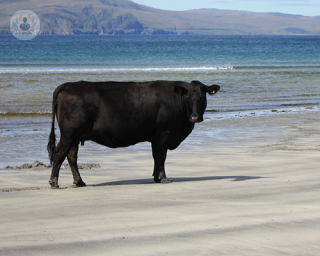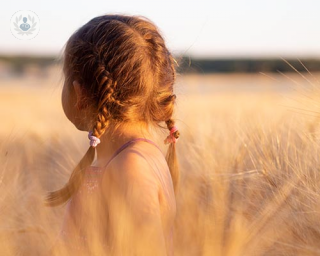Child allergies
What are childhood allergies?
Allergies are when the body’s immune system mistakenly recognises a substance as being dangerous and attacks it in an abnormal reaction. These reactions can be severe and can harm the sufferer’s own body. Allergic reactions can range from sneezing or itching to the airways closing up. Mild allergies are common – it is thought that as many as 25% of people in the UK will suffer from an allergy at some point in their lives.
Allergies often begin in childhood and many go away as the child gets older, although they can be a life-long nuisance.

Prognosis of the illness/condition
Childhood allergies can range from mild to severe, or even life-threatening (anaphylaxis). The latter is uncommon. Allergies may disappear as the child grows up.
Allergies present itself in 3 major systems:
- The skin: eczema, dry skin patches, itching, hives etc
- The gut: abdominal pain, constipation, diarrhoea, blood and mucus in stools, refusing to eat, poor weight gain, vomiting, acid reflux etc
- The breathing system: sneezing, blocked nose, itch, wheezing, coughing , shortness of breath etc
What are the causes of childhood allergies?
It is unclear what causes an allergy to develop in the first place, although children are more likely to have allergies if their parents do. However, this does not mean that parents pass their allergies to their children – many parents with allergies have children who never suffer from them, while some children develop allergies even though their parents are allergy-free. Children may also suffer from different allergies to their parents.
Common allergens (substances that trigger allergies) include:
Aeroallergens:
- Dust mites
- Pollen( tree and grass)
- Mold
- Pet dander(cats, dogs)
- House dust mite
Common food allergens:
- Cow’s milk
- Eggs
- Certain fish and shellfish
- Nuts
- Soy
- Wheat
Other causes include:
- Insect stings/bites
- Certain medicines
- Certain chemicals
Symptoms of childhood allergies
Allergies cause the immune system to overreact to a substance it has mistaken as a pathogen invading the body. It releases antibodies called immunoglobulin E (IgE), which stimulate cells to release substances like histamine to fight the non-existent invader. These substances cause allergic reactions, which can appear as the following symptoms:
Airborne allergens:
- Sneezing
- Congestion
- Coughing
- Itching in the eyes, nose or throat
- Watering eyes
Foods, medicines, insect stings:
- Stomach ache
- Diarrhoea
- Vomiting
- Wheezing
- Trouble breathing
- Coughing
- Hoarseness
- Throat tightness
- Itchy, watery, or swollen eyes
- Hives
More severe reaction causes Drop in blood pressure, causing faintness and could be life threatening. The most severe type of reaction is called anaphylaxis.
Medical tests to diagnose childhood allergies
Skin prick tests can be used to diagnose many allergies. This is where a concentrated liquid solution of the allergen is dropped onto a small area of skin, which is then scratched, or simply injected just under the skin. If the child has an allergy, the skin in that area will redden and come up in a small lump like a mosquito bite within 15 minutes.
For smaller children or those who are particularly sensitive, a blood test may be performed instead.
These test will help diagnose the immediate type of allergies where the body reacts within few minutes of exposure to allergens.
Treatments for childhood allergies
There is no cure for a childhood allergy, but few may disappear as the child gets older. They symptoms can be managed by avoiding the allergens and in the case of more severe allergies, keeping a syringe filled with epinephrine close at all times in case of anaphylaxis.
Allergies are not static. Some individuals may grow out of certain allergies but develop others, therefore, allergic individuals need regular follow ups and yearly review and tests.















